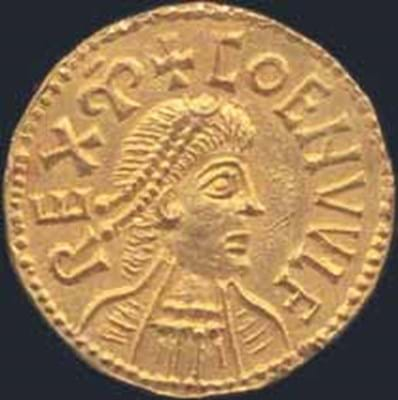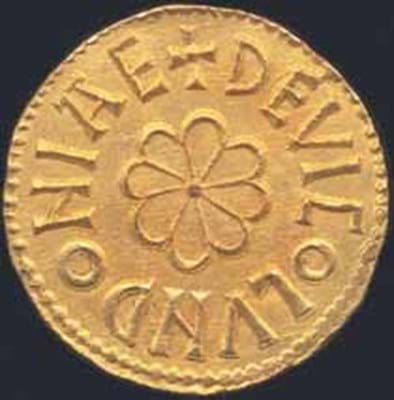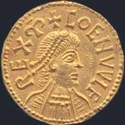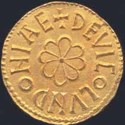Early gold coins are rare survivals, but this 3/4in (20mm) diameter specimen is in a particularly remarkable state of preservation and was of great numismatic interest for several reasons. Its obverse bust of Coenwulf, King of Mercia (AD796-821), is the first proper regal portrait of an Anglo-Saxon ruler. The reverse, bottom right, with its central floral design and the legend DE VICO LVDONIAE (from the wic of London) is the only known gold coin to feature a London mint signature between the gold shillings of c.AD 630 and Henry III's gold penny of 1257, and it is the only coin to refer to London's wic, the Anglo-Saxon trading settlement outside the old city walls.
Spink had been predicting a price of around £120,000-150,000 but the degree of interest when it came under the hammer on October 6 saw the bidding go well over this level, underscoring the buoyancy of the English coin market. There were a dozen bidders in the running at the £150,000 mark; half a dozen (including a representative of the British Museum, who hold six of the seven other recorded Anglo-Saxon gold pennies) up to £170,000 and four would-be purchasers beyond that.
The successful buyer at £200,000 (plus 15% premium) was Allan Davisson, a collector of early British coins from Minnesota.
The price compares to the £145,000 paid for the last English gold penny to appear at auction, the aforementioned Henry III gold penny sold at Spink in 1996, while the previous auction high price for an English gold coin was the £150,000 paid in the same rooms in 1999 for a George III English gold crown from 1817.
The Coenwulf penny, discovered three years ago by an amateur metal detectorist near a footpath by the River Ivel in Bedfordshire, will require an export licence should its purchaser wish to take it out of the country.
Coenwulf is king again as unique penny takes £200,000
RIGHT: London auctioneers Spink’s pre-sale billing of this Anglo Saxon gold penny as ”the most important discovery in British numismatics for many years” gained tangible endorsement last week when they sold it for £200,000 – a new record for an English coin.








